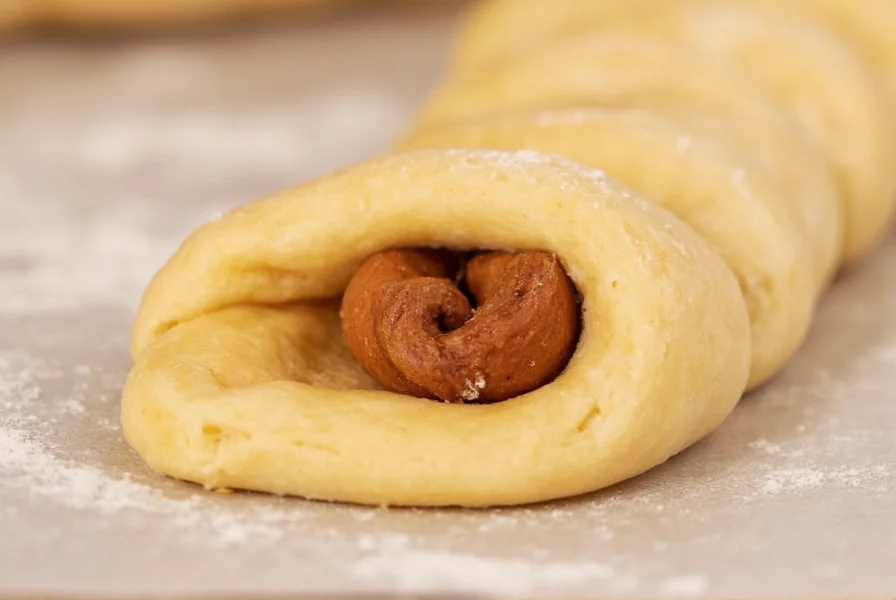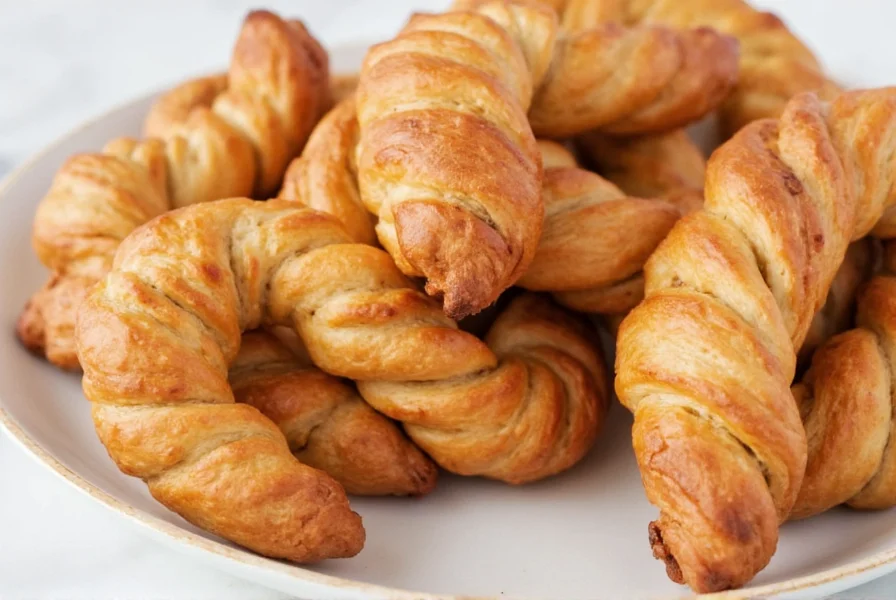Understanding exactly what goes into cinnamon twists helps bakers recreate authentic versions at home or make informed choices when purchasing store-bought varieties. These popular pastries combine simple pantry staples with a few specialty ingredients to create their distinctive swirl pattern and comforting flavor profile.
The Essential Dough Components
The foundation of any cinnamon twist begins with the dough. Unlike puff pastry or croissant dough, cinnamon twists use a enriched yeast dough that's similar to dinner roll or brioche dough but slightly less rich. The standard dough ingredients include:
- All-purpose flour (sometimes with a portion of bread flour for better structure)
- Active dry yeast or instant yeast for proper rising
- Warm milk (typically between 105-115°F) to activate the yeast
- Granulated sugar to feed the yeast and add sweetness
- Unsalted butter (melted or softened) for richness and tenderness
- Eggs (in some recipes) for added richness and color
- Salt to balance flavors and control yeast activity

Decoding the Cinnamon-Sugar Filling
The signature swirl comes from the filling, which is simpler than many realize. The traditional cinnamon twist filling contains just three essential ingredients:
| Ingredient | Role in Cinnamon Twists | Common Variations |
|---|---|---|
| Ground cinnamon | Provides the characteristic warm spice flavor | Ceylon cinnamon for milder flavor |
| Granulated sugar | Adds sweetness and helps create caramelization | Brown sugar for deeper flavor |
| Unsalted butter | Creates a spreadable paste and rich mouthfeel | Margarine in commercial versions |
Many home bakers wonder what's the difference between cinnamon roll filling and cinnamon twist filling. The answer is that twists typically use a simpler filling without the nuts, raisins, or complex spice blends sometimes found in cinnamon rolls. The focus remains squarely on the cinnamon-sugar-butter combination.
Glaze Components (Optional but Common)
While not technically part of the twist itself, most cinnamon twists feature a simple glaze. The standard glaze ingredients include:
- Powdered sugar (confectioners' sugar)
- Milk or cream (for consistency)
- Vanilla extract (for flavor enhancement)
- Lemon juice or extract (in some recipes to cut sweetness)
Commercial bakery versions of what are store-bought cinnamon twists made of often include additional ingredients like vegetable shortening, preservatives, and dough conditioners to extend shelf life and maintain consistency across large production batches.
Homemade vs. Commercial Cinnamon Twists Ingredients
When examining what's in cinnamon twist pastry from different sources, notable differences emerge:
- Homemade versions typically contain only the core ingredients without additives
- Commercial bakery products often include dough conditioners, preservatives, and stabilizers
- Fast food chain versions may use partially hydrogenated oils and artificial flavors
- Supermarket frozen varieties frequently contain additional sugars and anti-caking agents

Allergen and Dietary Considerations
For those with dietary restrictions, understanding cinnamon roll twist recipe components is crucial. Traditional cinnamon twists contain:
- Gluten (from wheat flour)
- Dairy (milk, butter)
- Eggs (in many recipes)
Modern adaptations address these concerns with gluten-free flour blends, plant-based milk and butter alternatives, and egg substitutes. However, these substitutions often alter the texture and flavor profile from the traditional traditional cinnamon twist dough composition.
Perfecting Your Cinnamon Twist Recipe
When crafting the ideal cinnamon twist, attention to ingredient quality matters. For the most authentic flavor when exploring cinnamon sugar twist filling recipe options, use:
- Freshly ground cinnamon (check expiration date)
- High-quality unsalted butter at proper temperature
- Properly measured flour (spoon and level method)
- Fresh yeast (check expiration date)
The ratio of cinnamon to sugar significantly impacts the final product. Most professional bakers recommend a 1:4 ratio of cinnamon to sugar for balanced flavor that's recognizable but not overwhelming—a crucial detail often missed in what are cinnamon twists made of inquiries.
What's the difference between cinnamon twists and cinnamon rolls?
Cinnamon twists feature a simpler preparation where the dough is rolled flat, spread with filling, then twisted rather than rolled into a coil. They typically contain fewer ingredients than cinnamon rolls, with a focus on the basic cinnamon-sugar-butter combination without nuts or complex additions.
Do cinnamon twists contain yeast?
Yes, traditional cinnamon twists contain yeast in the dough. The yeast creates the light, airy texture through fermentation. Some quick bread versions exist without yeast, but these are technically different pastries that mimic the cinnamon twist shape.
Are there any unexpected ingredients in commercial cinnamon twists?
Many store-bought cinnamon twists contain additional ingredients not found in homemade versions, including dough conditioners (like DATEM), preservatives (such as calcium propionate), and sometimes artificial flavors or colors to maintain appearance and extend shelf life.
Can I make cinnamon twists without butter?
Yes, though the texture and flavor will differ. Margarine, coconut oil, or plant-based butter alternatives can substitute for regular butter in both the dough and filling. For dairy-free versions, ensure all dairy ingredients (milk, butter) are replaced with suitable alternatives.
Why does my homemade cinnamon twist filling leak out during baking?
Filling leakage typically occurs when too much butter is used in the filling or when the dough isn't properly sealed. The ideal filling should be a thick paste, not liquid. Chilling the shaped twists for 15-20 minutes before baking helps prevent leakage by solidifying the butter.











 浙公网安备
33010002000092号
浙公网安备
33010002000092号 浙B2-20120091-4
浙B2-20120091-4